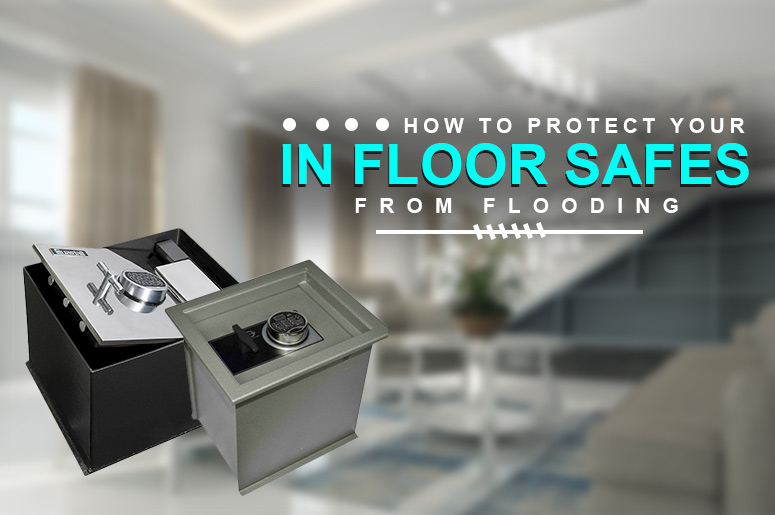How to Protect Your In-Floor Safes From Flooding
More than a dozen cyclones sweep through Australia each year, usually with disastrous consequences. Aside from causing harm to people, these cyclones also wreak havoc to homes, often destroying precious belongings. With in-floor safes, your valuables do stand a better chance of surviving. But if you want to ensure maximum protection for your items, you’ll need to take extra measures.
Even if you’re not dealing with cyclones, your floors can get flooded from leaky pipes. To help keep your belongings dry, below we share valuable tips to flood-proof your safe.
1. Protect your pipes from freezing.
If you’re living in a colder part of Australia, wrap your exposed pipes with insulating material. Additionally, you should also seal any air leaks and keep temperatures warm. A frozen pipe can crack, which consequently leads to water leaks.
2. Clean the gutters.
Water should easily flow from your roof and away from the foundation of your home. A clogged gutter can cause water to seep into the walls and floors, which may eventually flood your safe.
3. Get rid of cracks around the house.
The small cracks in your windows, doors, and walls can also contribute to water buildup in your home. Sealing these cracks, including any larger gaps in the foundations, can help to prevent water from reaching your safe.
4. Strategically place your safe.
It may surprise you to know that a floor or wall safe can also be fitted under the staircase. This offers better protection against flooding since the safe is in an elevated location.
Additional tips
Floor fireproof safes actually offer more protection for your valuables than a regular floor or wall safe, so that’s another option to consider. To prevent moisture buildup inside the safe, you can also buy in-floor safe desiccants or mothballs.
Items that need protection from flooding
Generally, documents and electronic devices are the most prone to water damage, so make sure to keep these items in sealed containers, such as in your safe.
Personal records
Adoption papers, birth certificates, marriage certificates, passports, diplomas, photocopies of credit cards, and phone numbers of important people at work or in your family are just some of the personal records you should protect from water damage.
Medical records
Health insurance cards, prescription numbers, your doctor’s phone number, and immunisation records should also be protected from floods.
Financial documents in-floor safe
Examples of financial records to secure are your bank statements, wills, receipts, tax records, super records, and financial documents relating to your business.
Home and property documents in Safe
Car titles, appraisal papers, mortgage statements, and insurance policies are important to keep safe. In many cases, when these types of documents are lost or destroyed, getting another copy will just spell a headache.
Other items
Don’t forget your family photo albums, graduation photos, and collection of favourite CDs or vinyl. If your life is stored in your laptop, keep it in the safe, too. Apart from protecting your important files from burglars, the safe can also reduce water damage in case of flooding.
Takeaway
While in-floor safes can effectively safeguard your items from burglars and thieves, protecting them against flooding requires additional effort. For more information about protecting your belongings from water damage inside a safe, call one of our safe technicians now on (02) 9569 4807.



 1300 405 200
1300 405 200
